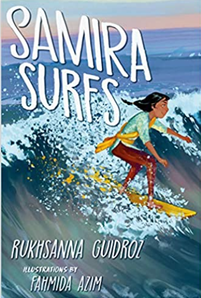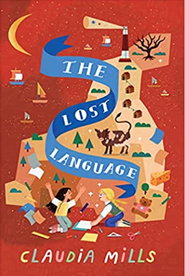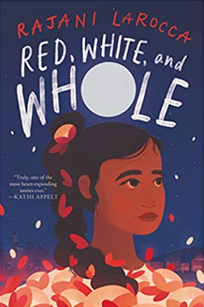By Ted KeslerI have just completed my position as chairperson of the NCTE Poetry and Verse Novels for Children Committee. Our list of notable poetry and verse novels that were published in 2021 as well as other information about the award can be found on the NCTE Award for Excellence in Poetry for Children page. In the post Exploring Notable Poetry Books for Advocacy with Children published on 3/15/2022, I presented three notable poetry piturebooks from this list that promote advocacy and offered lesson plan ideas to do with children. In this second post, I discuss three notable verse novels that promote resourcefulness and the strength of family bonds in the face of overwhelming adversity. All three verse novels featured– Samira Surfs (Ruhksanna Guidroz), The Lost Language (Claudia Mills), and Red, White, and Whole (Rajani LaRocca) – feature 12 year-old girl protagonists. Therefore, I recommend these books for grades 5 through 7 readers. First, it is important to establish what constitutes notable verse novels for children. Our committee’s definition is:
The verse novels I present in this blog post certainly meet these criteria to heighten each protagonist’s encounter with adversity. An example is from Samira Surfs. Samira, her older brother, Khaled, and their parents are now living as unwanted refugees in Bangladesh, after escaping religious persecution in Burma (now called Myanmar). “Escape”
This excerpt expresses the power of poetry to convey this harrowing experience. Guidroz uses onomatopoeia, personification, strong imagery and word choice, metaphor, line breaks and stanzas to "create images, express feelings, and stir emotions.” This book invites so many analytic and creative responses that will heighten students’ intentions for social justice. Here are some suggestions:
All three verse novels also contend with issues of trauma. I pointed out the issues in Samira Surfs. In The Lost Language (spoiler alert), Bumble and her father contend with her mother’s mental breakdown. In Red, White, and Whole (spoiler alert), Reha and her father contend with her mother’s leukemia. Here is one excerpt:
Here I turn to The Vulnerable Heart of Literacy (Dutro, 2019) for guidance. After reading this and other poems in the novel that focus on Amma’s illness, teachers might open invitations for students to share and write their own entries of times that they faced fear of illness or injury or hospitalization for themselves or loved ones that would open the vulnerable heart of literacy in the class community. These kinds of invitations are also possible for poems that describe the traumatic situations in Samira Surfs and The Lost Language. By making our classrooms sites of testimony and critical witness, we create “literacies of connection, of love, and of respect for the knowledge that comes from pain, from struggle, and toward the power of bringing that knowledge to learning” (p. 113). Ted Kesler, Ed.D. is an Associate Professor at Queens College, CUNY and has been a CLA Member since 2010. He served as chairperson of the NCTE Poetry and Verse Novels for Children Committee from 2019 to 2021. www.tedsclassroom.com | @tedsclassroom | www.facebook.com/tedsclassroom) Comments are closed.
|
Authors:
|
CLA
About CLA
|
Journal of Children's Literature
Write for JCL
|
ResourcesCLA-sponsored NCTE Position Statements
|
Members-Only Content
CLA Video Library
|
© COPYRIGHT 2018.
ALL RIGHTS RESERVED |




 RSS Feed
RSS Feed